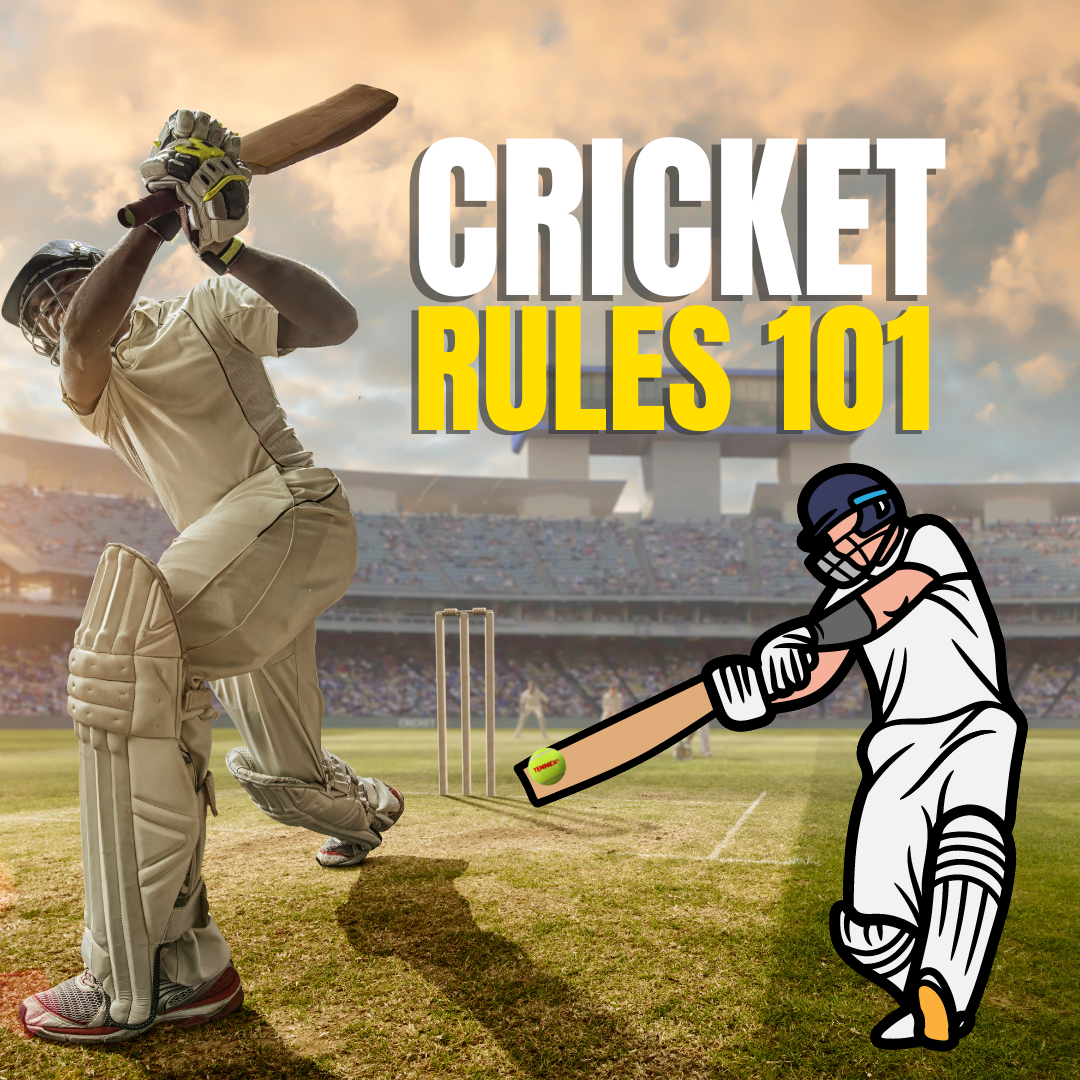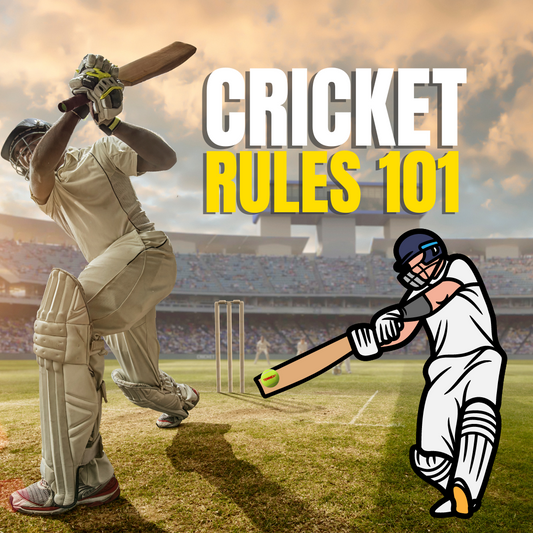A cricket match is played on a cricket pitch between two teams, each consisting of eleven players. One team bats while the other team bowls and fields.
The game involves one bowler, two batsmen, one wicket keeper (the only person from bowling team allowed to wear pads and gloves on the field), and other fielders on the field at one time. The game is divided into overs. An over consists of six legal deliveries (balls) bowled by the same bowler from one end of the pitch. After one over, the bowler switches end. The innings are decided upon, and each team takes turns to bat and bowl.
The bowler, wicket keeper, and fielders try to get the batsmen out as soon as possible one by one to clear off the entire team, while the batsmen try to score as much as possible by using the least number of players on their team. The bowling team aims to dismiss the batsmen and restrict the batting team's score. The bowler delivers the ball from one end of the pitch towards the batsman at the other end. The wicket keeper stands behind the opposite end to the bowler to catch the ball. The fielding team tries to prevent the batting team from scoring runs and getting the batsmen out. Fielders attempt to catch the ball, stop it from reaching the boundary, and execute run-outs by hitting the stumps with the ball. Batsmen hit the ball and run between the wickets, and make it to the other end before the fielder can hit the wickets with the ball.
Each time one pitch length is covered, it brings 1 run to the team’s score. If the ball reaches the boundary rope after being hit, the batsman scores four runs (a boundary). If the ball clears the boundary without touching the ground, the batsman scores six runs (a six). In addition to runs scored by batsmen, extras can be awarded to the batting team. Extras include byes (when the ball passes the batsman without hitting anything), leg byes (when the ball hits the batsman's body and deflects away), wides (when the bowler delivers a ball outside the batsman's reach), and no-balls (when the bowler oversteps the front line, delivers a high full toss, or throws an illegal delivery).
A batsmen can be given out by either being bowled (the ball hitting their stumps), caught (fielder catches the ball without it bouncing), Leg Before Wicket (the ball hits the batsmen’s pads impeding its line into the stumps), stumped (the wicket keeper strikes the stumps with their gloves whilst the batsmen is outside of their crease with ball in hand), hit wicket (the batsmen hits their own wicket), handled ball ( the batsmen handles the cricket ball on purpose), timed out (the player fails to reach the crease within 30 seconds of the previous batsmen leaving the field), hit ball twice (batsmen hits the cricket ball twice with their bat) and obstruction ( the batsmen purposely prevents the fielder from getting the ball).
Two on-field umpires, stand at either end of the wicket, oversee the match, making decisions and ensuring fair play. They adjudicate on dismissals, signaling boundaries, and no-balls, among other responsibilities.
It's important to note that these rules provide a general overview of cricket. The sport has different formats, such as Test cricket, One-Day Internationals (ODIs), and Twenty20 Internationals (T20Is), which may have specific variations and additional rules.




